Growing up with books
Pagony Publishing House for youth and children’s literature
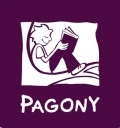
The Hungarian children's book publisher Pagony aims to mature the attitude towards youth and children's literature in Hungary. With their thirteen children's bookstores both in the capital Budapest and in other Hungarian towns, and with their own children's book publishing house, Pagony has an unmistakable share in the Hungarian children's and youth book market. The publisher mainly focuses on publishing the work of contemporary Hungarian authors and illustrators. However, they also pay close attention to foreign children's literature and strive to introduce the work of well-known and recognised artists to the Hungarian reading public. In fact, the publisher's website states, that they pay special attention to the introduction of Dutch children's and youth literature, since they feel that the works of Annie M.G. Schmidt, Fiep Westendorp, Guus Kuijer, Anna Woltz and Annet Huizing fit their profile very well. The following is a brief history of a Hungarian children's book publisher with its own children's bookstore chain, that became fascinated with the children's and youth literature of the Low Countries and used it in their branding. #Publishers #Childrens' Literature
Why can’t we find a real children's book publisher?
The Pagony Publishing House looks back to a personal story of three couples, who were friends and with the necessary background knowledge of the book trade. It so happened that two young mothers Eszter Kovács and Dóri Sárdi, who were looking for children's books for their children at the annual Budapest Book Festival, but only saw a few titles here and there at the stands of various publishers. This gave rise to the idea of gathering the children's book titles in one place, in a shop specialised in providing books for the youngest readers. The book trade was not an unfamiliar territory for these women: they had studied humanities and worked as editors. Together with a third friend, Eszter Demény, and with their husbands, they drew up the business plan and a few months after the summer book festival, in October 2001, the dream (partly) became reality, the children's bookstore 'Pozsonyi Pagony' opened its doors.
10 years - 100 titles
The plan to publish their own titles was temporarily postponed, but remained as a secondary goal in the business plan. After a year of functioning as a children's book shop, the well-known children's book author Veronika Marék entered the shop with a new title for which she had not yet found a publisher. This is how they started publishing children's and youth literature. It was undoubtedly a good thing that they had started with the shop first, as this meant they could see what was going on in the market, what existed on the publisher's side and what the public needed. After the first shop, the objective was to build a chain of children's bookshops, and a new step was taken with the opening of a new one in 2003. In the meantime, more and more Hungarian children's book authors found their way to Pagony, and the number of self-published titles increased slowly but steadily. In 2006, the publishing house took part in the Children's Book Fair in Bologna for the first time. In the same year, the first title by the now internationally successful Hungarian author, Judit Berg was published. The company grew dynamically. The centre of gravity gradually shifted from children's bookstore to children's book publisher: ten years after the opening of the first Hungarian children's bookstore, Pagony Publishers already had a hundred of its own titles.
Tension between foreign trends and Hungarian tradition
The publisher, which has now been active on the Hungarian book scene for more than two decades, has an insight into the changes that have taken place on the Hungarian book scene over the past twenty years. At the beginning, foreign literature was often different in its themes. Foreign children's books dealt with themes of everyday life, at the same time this was less true for Hungarian children's books. Nowadays, however, contemporary Hungarian authors also deal with all sorts of subjects, so that the gap between Hungarian and foreign literature has become less and less noticeable. Illustrations also gained more attention and prestige among the public. In the past, it was risky to publish a children's book with one fairy tale, despite the beautiful illustrations in it. A recurring phenomenon are tensions around children's books with taboo-breaking stories. Translations of some successful foreign children's books could not find their way to the young Hungarian readers. According to the founders of Pagony, it is because of the taboo tradition. These are themes (such as divorce) that adults think children should not read about at a young age. In contrast, in Germany, and in the Netherlands, these themes appear quite naturally in children's books. In this respect, however, the approach of Dutch children's and youth literature is exemplary, according to the founders. That is why they highlight Dutch children's and youth literature in their publisher's description and proudly announce that they pay special attention to it.
Annie M.G. Schmidt and Anna Woltz in Hungarian
In 2011, when publishing house Pagony celebrated its 10-year anniversary with one hundred titles, there was another reason for celebration, seen from a Dutch perspective: in that year, the first Dutch-language title in Hungarian translation appeared at the publishing house. The Hungarian translation of the story of Floddertje by Annie M.G. Schmidt started a long and successful series of translations of Schmidt. From 2011 to the present day, sixteen titles from Schmidt's oeuvre have been translated into Hungarian, largely by translator Orsolya Varga. This is about one third of all translations from Dutch into Hungarian; in the autumn of 2022 as many as 44 Dutch-language children's and youth books were published by Pagony. The publishing house had the indispensable support of the Dutch Foundation for Literature, half of the translated titles received a subsidy for the translation costs. Besides M.G. Schmidt, other canonical Dutch-language authors appeared in Hungarian translation: works by Mies Bouhuys, Guus Kuijer, Bart Moeyaert, Mirjam Oldenhave and Anna Woltz were translated. If these translated titles are divided into age categories, it is clear that the publisher always does a careful selection and makes sure that all age groups are represented. To give just a few examples: Pim & Pom, Jip & Janneke, Pluk, Abeltje, Mees Kees, Polleke, Mijn bijzonder raar week met Tess, Honderd uur nacht, etc. have been published by Pagony. Of the 44 Dutch titles translated, almost half, 21 titles, have been translated by Andrea Rádai, who is the most active translator of children's and youth literature today, beside Orsolya Varga.
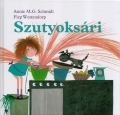

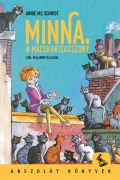
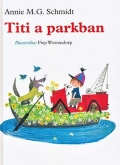
Series to guide the readers
Not everyone knows immediately if a title by a foreign author is suitable for his or her child. For this form of guidance, the Pagony publishers have created several series for different themes or age groups. Vészkijárat [Emergency Exit] includes titles with a pithy theme, trying to provide help in difficult situations (e.g. living with an illness, bullying at school). The Abszolút Könyvek [Absolute Books] series is aimed at the 9–12-year-old audience, who clearly do not want to read fairy tales anymore, but do not yet belong in the young adult category. In 2014, Tilos az Á Könyvek, Pagony's Youth Publishing House was launched to appeal to young people over 12 (but in reality everyone, including adults) who are interested in social, philosophical and aesthetic issues. Several Dutch titles got a place in this series of books, including works by Anna Woltz and Marloes Morshuis.

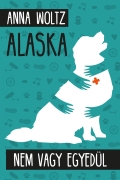
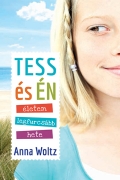
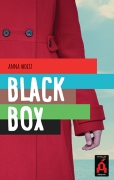
The publisher of children's books in Hungary
Over the past two decades, Pagony Publishers has become the number one children's book publisher in Hungary. They have carefully built their brand, apart from books they have their own games and toys, the Pagony playhouse and also Pagony festival. Some of the titles that the publishing house started with, is compulsory literature in schools today. The different series characterise their profile; from reading promotion to young adults, all age groups under 18 are addressed. Beside the webshop, the bookstores can be found both in the capital and outside Budapest, where customers can choose from over 10,000 titles. Pagony not only guarantees quality children's and youth literature within Hungary. The large number of translations of Dutch titles is a sign of good international contacts. The Dutch publishing house Querido and the Dutch Foundation for Literature have very positive experiences and speak of good, smooth communication with the Hungarian publisher. All of this will undoubtedly be an important asset, as the publisher's long-term plan includes expanding abroad. That will definitely open a new chapter in Hungarian children's and youth literature.
(Krisztina Gracza)
Refences
A kiadóról. (n.d.). Pagony Kiadó. Retrieved August 13, 2022, from https://kiado.pagony.hu/rolunk
Ruff, Orsolya. (n.d.). Nem találtak könyvet a gyerekeiknek, alapítottak egy kiadót – 18 éves a Pagony. Könyves Magazin. Retrieved August 13, 2022, from https://konyvesmagazin.hu/gyerekirodalom/nem_talaltak_konyvet_a_gyerekeiknek_alapitottak_egy_kiadot_18_eves_a_pagony.html
Szollár, Veronika. (2021, October 11). 20 évesek lettünk! Két évtized a Pagonyban. Pagony Kiadó. Retrieved August 13, 2022, from https://www.pagony.hu/cikkek/pagony-20-eves-szuletesnap-kiado-tortenet
Tilos az Á könyvek. (n.d.). Pagony Kiadó. Retrieved August 13, 2022, from https://www.pagony.hu/akciok/tilos-az-a-konyvek-ig


